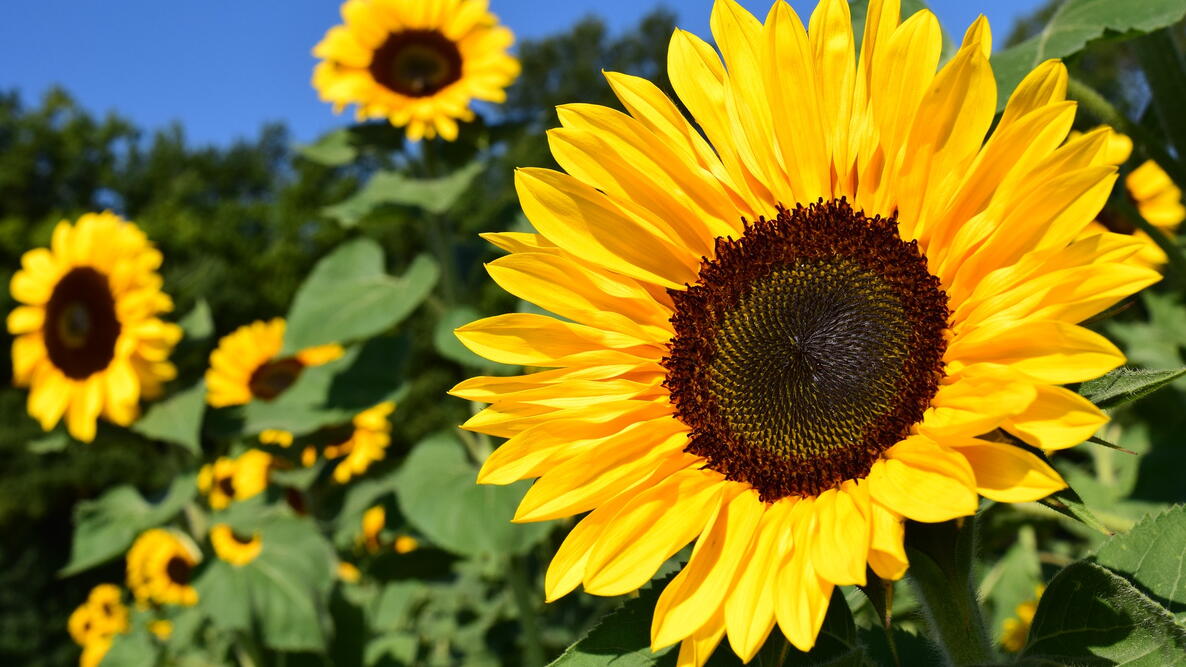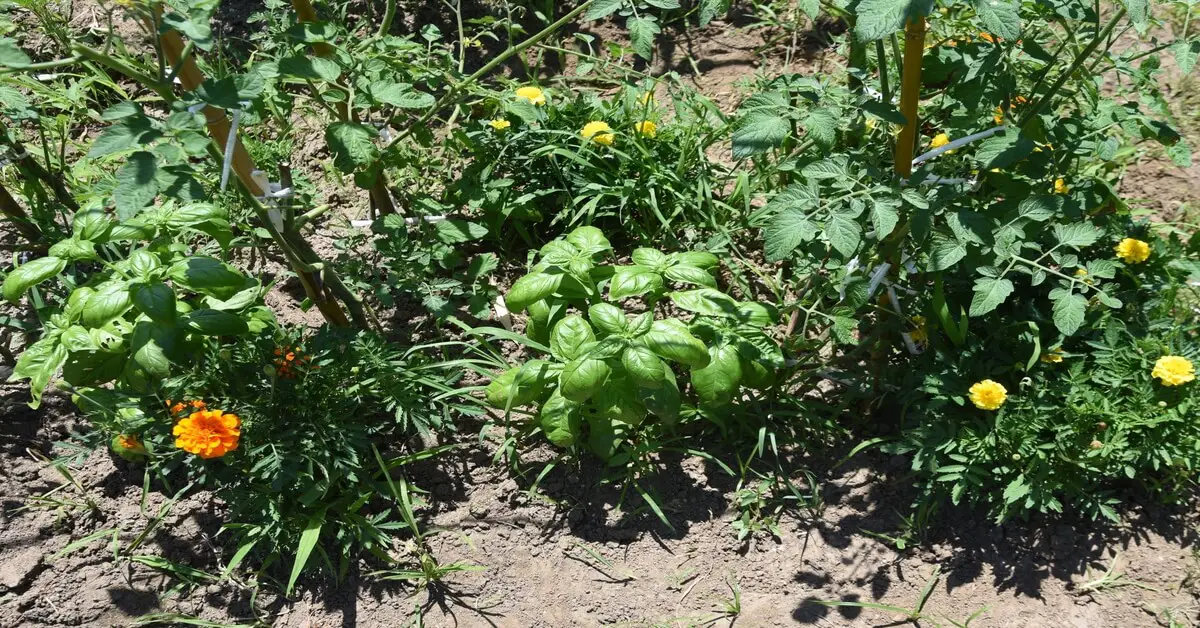Keep Gooseberry Sawflies Away With Companion Planting
Gooseberry Sawflies: A Pest You Can Avoid with Companion Planting
Gooseberry sawflies are a common pest of gooseberry bushes. The adult sawflies are small, black insects with yellow markings. They lay their eggs on the leaves of gooseberry bushes, and the larvae that hatch from the eggs feed on the leaves. The larvae are green and have a saw-like thorax, which they use to cut into the leaves.
Gooseberry sawfly damage can be severe, and can lead to the loss of leaves and even entire branches. If you have gooseberry bushes in your garden, it's important to take steps to control gooseberry sawflies. One of the best ways to do this is to use companion planting.
Companion planting is a gardening technique that involves planting certain plants together to benefit each other. Some plants, such as marigolds and nasturtiums, attract beneficial insects that prey on pests like gooseberry sawflies. Other plants, such as onions and garlic, have strong scents that repel pests.
If you're looking for ways to keep gooseberry sawflies away from your gooseberry bushes, here are a few companion plants to consider:
- Marigolds: Marigolds are a popular companion plant for a variety of vegetables, including gooseberries. They attract beneficial insects like ladybugs and lacewings, which prey on pests like gooseberry sawflies. Marigolds also have a strong scent that helps to repel pests.

- Nasturtiums: Nasturtiums are another good companion plant for gooseberries. They attract beneficial insects like hoverflies and parasitic wasps, which help to control gooseberry sawfly populations. Nasturtiums also have a strong scent that repels pests.

- Onions: Onions have a strong scent that repels pests like gooseberry sawflies. They can be planted around the base of gooseberry bushes to help keep these pests away.

- Garlic: Garlic is another strong-scented plant that repels pests like gooseberry sawflies. It can be planted in the same way as onions, around the base of gooseberry bushes.

- Chives: Chives are a good companion plant for gooseberries because they help to improve the soil. They also attract beneficial insects like ladybugs and lacewings, which help to control pests like gooseberry sawflies.
- Coneflowers: Coneflowers are a beautiful and beneficial companion plant for gooseberries. They attract beneficial insects like ladybugs and lacewings, which help to control pests like gooseberry sawflies. Coneflowers also have a strong scent that repels pests.
- Yarrow: Yarrow is a hardy perennial that is easy to grow. It attracts beneficial insects like ladybugs and lacewings, which help to control pests like gooseberry sawflies. Yarrow also has a strong scent that repels pests.

- Sunflowers: Sunflowers are not only beautiful, but they also attract beneficial insects like ladybugs and lacewings, which help to control pests like gooseberry sawflies. Sunflowers also provide food for birds, which can help to keep pest populations in check.

In addition to companion planting, there are a few other things you can do to control gooseberry sawflies. These include:
- Inspect your bushes regularly: Inspect your gooseberry bushes regularly for signs of gooseberry sawfly damage. If you see any larvae, you can pick them off by hand and destroy them.
- Prune your bushes: Pruning your gooseberry bushes can help to improve airflow and make it more difficult for sawflies to lay their eggs.
- Cover your bushes: If you have a serious infestation of gooseberry sawflies, you may need to cover your bushes with a fine mesh netting. This will help to prevent the sawflies from laying their eggs.
By using companion planting and other control methods, you can help to keep gooseberry sawflies away from your gooseberry bushes and enjoy a bountiful harvest of berries.
Gooseberry sawflies are a common pest of gooseberry plants. They can cause significant damage to the plants, leaving them defoliated and unproductive. However, there are a number of companion plants that can help to deter gooseberry sawflies.
Some of the best companion plants for gooseberries include:
- Broad beans: Broad beans are known to attract hoverflies, which are natural predators of gooseberry sawflies.
- Tomatoes: Tomatoes release a scent that can repel gooseberry sawflies.
- Chives: Chives release a volatile oil that can deter a variety of pests, including gooseberry sawflies.
- Tansy: Tansy is a flowering plant that has insecticidal properties. It can be planted near gooseberry bushes to help repel gooseberry sawflies.
If you are growing gooseberries, it is a good idea to plant some of these companion plants nearby. This will help to keep the gooseberry sawfly population in check and protect your plants from damage.
For more information about gooseberry sawfly companion planting, please visit Gardenia Inspiration.
FAQ of gooseberry sawfly companion planting
- What are some good companion plants for gooseberries?
- Broad beans: Broad beans fix nitrogen in the soil, which is beneficial to gooseberries. They also repel the gooseberry sawfly, a common pest of gooseberries.
- Tomatoes: Tomatoes are believed to repel some insects that feed on gooseberries. However, this claim is not scientifically proven.
- Tansy: Tansy is a pest-repelling plant that can be planted under gooseberry bushes. It deters flying insects such as Japanese beetles, striped cucumber beetles, squash bugs, and ants.
- Chives: Chives are another plant that is believed to repel pests from gooseberries. They also help to prevent some pathogenic issues that afflict gooseberries and other similar fruits and berries.
- Limnanthes douglasii (poached egg plant): Limnanthes douglasii is a ground cover plant that attracts hoverflies, which are natural predators of gooseberry sawfly caterpillars. It is also self-seeding, so you will not have to replant it every year.
- How can I use companion planting to control gooseberry sawfly?
- Plant some of the companion plants listed above near your gooseberry bushes.
- Inspect your gooseberry bushes regularly for signs of gooseberry sawfly damage. If you see any sawfly larvae, remove them by hand.
- You can also attract natural predators of gooseberry sawfly, such as hoverflies, ladybugs, and lacewings, to your garden by planting flowers that they like, such as dill, fennel, and yarrow.
- Are there any companion plants that I should avoid planting near gooseberries?
- There are no specific companion plants that you should avoid planting near gooseberries. However, it is important to avoid planting any plants that are known to attract pests or diseases to gooseberries. For example, you should avoid planting raspberries near gooseberries, as raspberries are susceptible to the same pests and diseases as gooseberries.
- Can I use companion planting to prevent other pests and diseases from affecting my gooseberries?
- Yes, companion planting can be used to prevent a variety of pests and diseases from affecting your gooseberries. By planting the right companion plants, you can create a healthy and balanced ecosystem in your garden that will help to deter pests and diseases.
- What are some other benefits of companion planting?
- Companion planting can help to improve the health and productivity of your plants.
- It can help to attract beneficial insects and pollinators to your garden.
- It can help to suppress weeds and improve the drainage and fertility of your soil.
- It can help to create a more visually appealing and interesting garden.
Image of gooseberry sawfly companion planting
Here are 5 images of gooseberry sawfly companion planting from Pinterest:
- Image 1: A gooseberry bush surrounded by a variety of other plants, including lavender, chamomile, and yarrow. The caption reads "Gooseberry sawfly companion planting: These plants help to deter the sawfly, which can be a pest of gooseberries."

- Image 2: A close-up of a gooseberry leaf with sawfly damage. The caption reads "Gooseberry sawfly damage: The sawfly larvae can cause significant damage to gooseberry leaves, leaving behind a telltale sawtooth pattern."

- Image 3: A row of gooseberry bushes with companion plants of onions and garlic. The caption reads "Gooseberry sawfly companion planting: Onions and garlic can help to repel the sawfly, thanks to their strong scents."

- Image 4: A gooseberry bush with companion plants of tomatoes and nasturtiums. The caption reads "Gooseberry sawfly companion planting: Tomatoes and nasturtiums can also help to deter the sawfly, as they are believed to produce chemicals that are toxic to the larvae."

- Image 5: A gooseberry bush with companion plants of dill and fennel. The caption reads "Gooseberry sawfly companion planting: Dill and fennel are another two plants that can help to repel the sawfly. They are both believed to contain compounds that make the leaves taste unpleasant to the larvae."

Post a Comment for "Keep Gooseberry Sawflies Away With Companion Planting"